Cambridge Notebook #7
Old clubs, new rules | A sprinkling of books & art | Brilliant Substacks
Welcome to Cambridge Ladies' Dining Society, my blog/newsletter about good conversations, the joys of reading, and celebrating the women often left out of the picture - even when portraits of them were included in certain privileged spaces. My new (old) title pays tribute to the women who were for many years excluded from full participation at the University of Cambridge, which has the dubious distinction of being the last UK university to award women degrees, and my next post will be about an episode in that inglorious history. This week’s newsletter includes how the oldest London clubs weren’t for gentlemen only; a major new exhibition of women artists in Britain; and my choices of great recent Substack articles.
Clubs of their own?
One of the world’s oldest gentlemen’s clubs has made news headlines in the UK this past week, after a vote was passed to change the rules to permit women to be members. The Garrick Club was named after the eighteenth-century actor David Garrick, and founded in 1831 in the heart of London’s theatre-land as a place where ‘actors and men of refinement and education might meet on equal terms’. For almost two hundred years women have been allowed into the club only occasionally as dinner guests of the members.
Until now, previous challenges to the ‘men-only’ Garrick rule have been defeated. Last year Michael Beloff KC, ironically the lawyer who pronounced in 2011 that women could legally continue to be excluded by the Garrick, changed his mind about the legality of the club’s statutes. In his opinion, the word ‘he’ in the original wording of the statutes should be understood to include ‘she’, and he warned that the Garrick was ‘likely to provoke an expensive lawsuit’ if it continued to exclude women from membership.
Despite their reputation, most private members’ clubs that were founded in eighteenth-century London to offer intellectual exchange and conviviality were not intended to be entirely for men. Seth Alexander Thévoz is the author of Behind Closed Doors: The Secret Life of London Private Members’ Clubs (Robinson, 2022). In a recent article for History Today he writes that the first London club with female members was launched in 1770 at 48 Pall Mall, making this mixed club older than most of today’s gentlemen’s clubs.
Salons were also popular well into the nineteenth century, and these were not only mixed-sex, but run by ‘Lady Patronesses’ who strictly controlled admission. ‘The salons were fun, but there was more to them than that,’ writes Susannah Gibson in her new book, Bluestockings: The First Women’s Movement (John Murray, 2024). ‘They were the only place where women and men could converse on intellectual topics as equals.’ ( I wrote about the ‘modern’ dining society organized by the publisher Joseph Johnson here).
By the 1860s many of these mixed salons had died out and new clubs were springing up, designed to meet the needs of the growing numbers of professional women in London, providing lodging, hot meals and networking opportunities.1 Other clubs were intended as gathering places for women who shopped. By the 1890s these clubs were very popular, with anything between 300 and 900 members.
‘The female club must be regarded as no isolated and ludicrous phenomenon, but as the natural outcome of the spirit of an age which demands excellence in work from women no less than from men.’ Poet, journalist and novelist Amy Levy
So why did London’s women’s clubs die out? Lack of money, to put it simply. Women’s clubs were more financially vulnerable than men’s clubs because Victorian women were much less likely to control their household budgets. By contrast, the Garrick, the Athenaeum, Brook’s and the Savile Club were able to count on enough generous donations from their founder members to take over grand premises, charge large membership fees and survive into the twenty-first century.
But in 2024 change is in the air for a select group of women who will become members of the Garrick if they don’t mind paying the eye-watering membership fees. It’s estimated that soon there will be seven women and 1,500 men. The actress Dame Judi Dench is rumoured to be the first woman who will be invited to join the club. Once again, it’s ironic that Dench’s portrait by Jennifer McRae is already hanging in the Garrick; it seems that portraits of distinguished women, by women artists, were invited in long before the women themselves.
A new exhibition Now You See Us: Women Artists in Britain 1520-1920 opens at Tate Britain, London this week. You can listen to distinguished art historian Professor Frances Spalding discussing it on BBC Radio 4’s Front Row 14 May 2024 here.
More book and art news
Jane Austen enthusiasts wanted to help transcribe a memoir of the life, travels and naval career of her brother, Admiral Sir Francis William Austen.
Crime writer PD James’s acclaimed Adam Dalgliesh mystery series is being reissued by Faber, in groups of five books at a time from August 2024 (Bookseller, 10.5.24). If you can get to Cambridge, don’t miss the wonderful ‘Murder by the Book’ at the University Library, featuring PD James’s early work.
Until May 22 you can listen for free to talks and discussions held at the Persephone Festival in April 2024, including ‘Virginia Woolf: In and Out of the Archive’ by clicking on the link here.
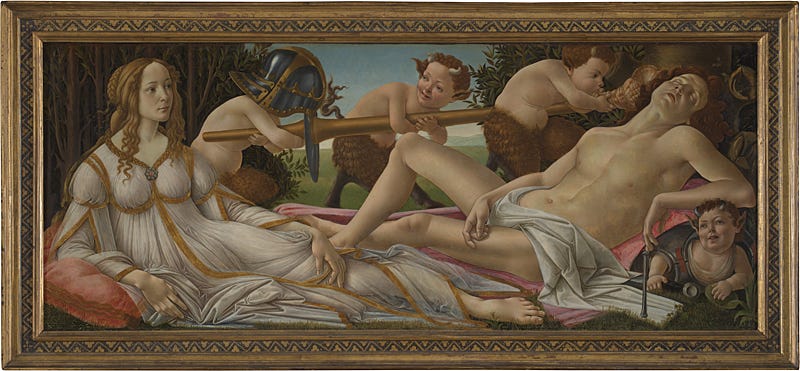
On Friday 10th May the National Gallery in London marked its 200th birthday. To celebrate, twelve of the nation’s most iconic paintings from its permanent collection have gone on display at museums and galleries across the UK. The Renaissance masterpiece, ‘Venus and Mars’ by Botticelli will go on show at the Fitzwilliam Museum, Cambridge, and is the highlight of a new display exploring ideas of sex and power, gender and the body through classical mythology and Italian art of the 1400s and 1500s. It’s the first time this painting has left the National Gallery since its acquisition 150 years ago in 1874. Free, and runs until 10 September 2024, booking details here.
At Clare Hall, Cambridge there’s a wonderful new exhibition by British-born Chinese photographer Jamie Lau. The display of his photographs was originally commissioned by the British Library to accompany their 2022-23 exhibition ‘Chinese and British’. Lau has sought to capture individuals of Chinese heritage who, like himself, identify with being part of more than one culture and who have forged an identity away from metropolitan life. Open daily, and free to visit: 10-5pm in Clare Hall’s Main Building, until 6 June 2024.
A bouquet of Substacks
Sunday 12 May was Mother’s Day in USA, and whether you celebrate the day or not, it seems to have been a good time for Substack writers to reflect on family relationships.
is droll on the subject of Bad Moms in Jane Austen: ‘as Austen knew well, sometimes it’s so much fun to go negative, even or especially on a sentimental day’. In ‘Queen of Hats’ writes about the complicated love of a daughter for her mother: ‘My mother wore the hats in the family. She liked them big and bold. Now that she's gone, I wear hats in her memory.’ Hats make an appearance again in ‘Cover Girl, 1923’, ’s moving post about her grandmother sharing love through crafted gifts: ‘There’s a famous photo of most of her granddaughters, ranging from three to twelve years old, in front of a Christmas tree wearing our cola, root beer, and ginger ale hats, and looking miserable.’ compares two ambivalent narratives of mothering in Penelope Mortimer and Elena Ferrante, and pays attention to Mary Cassatt’s woman and child paintings: ‘We tend to consider the artist as a mother, not as a child herself.’Literary Substacks I’ve greatly enjoyed recently include
’s A Fan’s Notes, who writes about the novels by women he’s planning to recommend: ‘It was women who made me want to write in the first place, and who taught me what kind of writer I wanted to be’. His post on homework excuses as written by agents and publishers is painfully brilliant. And don’t miss Part 2 of ’s comprehensive Book Directory on Substack, ‘B is for Book Industry Professionals’. It’s well worth checking out to find other bookish Substack publications you might enjoy. ’s post What I Learned in My First Year as a Widow is heartbreaking and unforgettable, as is ’s ‘On springtime, fathers and loss’, with her beautiful new translation of Victor Hugo’s Demain, dès l’aube: ‘My dear, the thing is, I know that you are expecting me.’A heartfelt thank you to all those who responded so generously to my Barbara Pym post last week. It was included in
’s The Author Stack’s ‘weekly stackable roundup’, ’s ‘Five Brilliant Things’ on The Clearing. I’m still catching up with all your brilliant comments, but please do add more on anything and everything you’ve read here.And finally, finally…
The actress Juliet Stevenson said of the Garrick Club during an interview on BBC Radio 4 this week: ‘I’m not so much interested in wining and dining, but I am interested in the exchange of ideas.’ I feel the same about our Substack gatherings on the Cambridge Ladies' Dining Society. It’s been six months since I published my first, tentative post here, and your generosity in subscribing, sharing, recommending and commenting has made me feel very welcome. So here’s a toast to you all, and I’m very grateful for the support of my paid subscribers, who help to keep me afloat. As ever, thank you for reading.
See Elizabeth Crawford’s excellent ‘Victorian and Edwardian Women’s Clubs: Tea and Shopping’ and ‘Victorian and Edwardian Women’s Clubs: A Practical Demand’ for more information about different women’s clubs in London during this period.

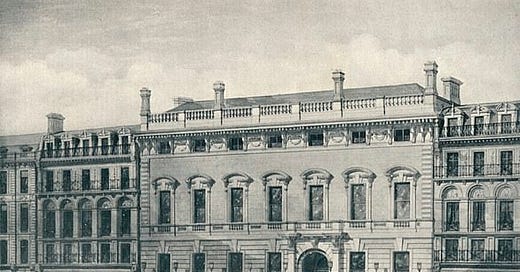



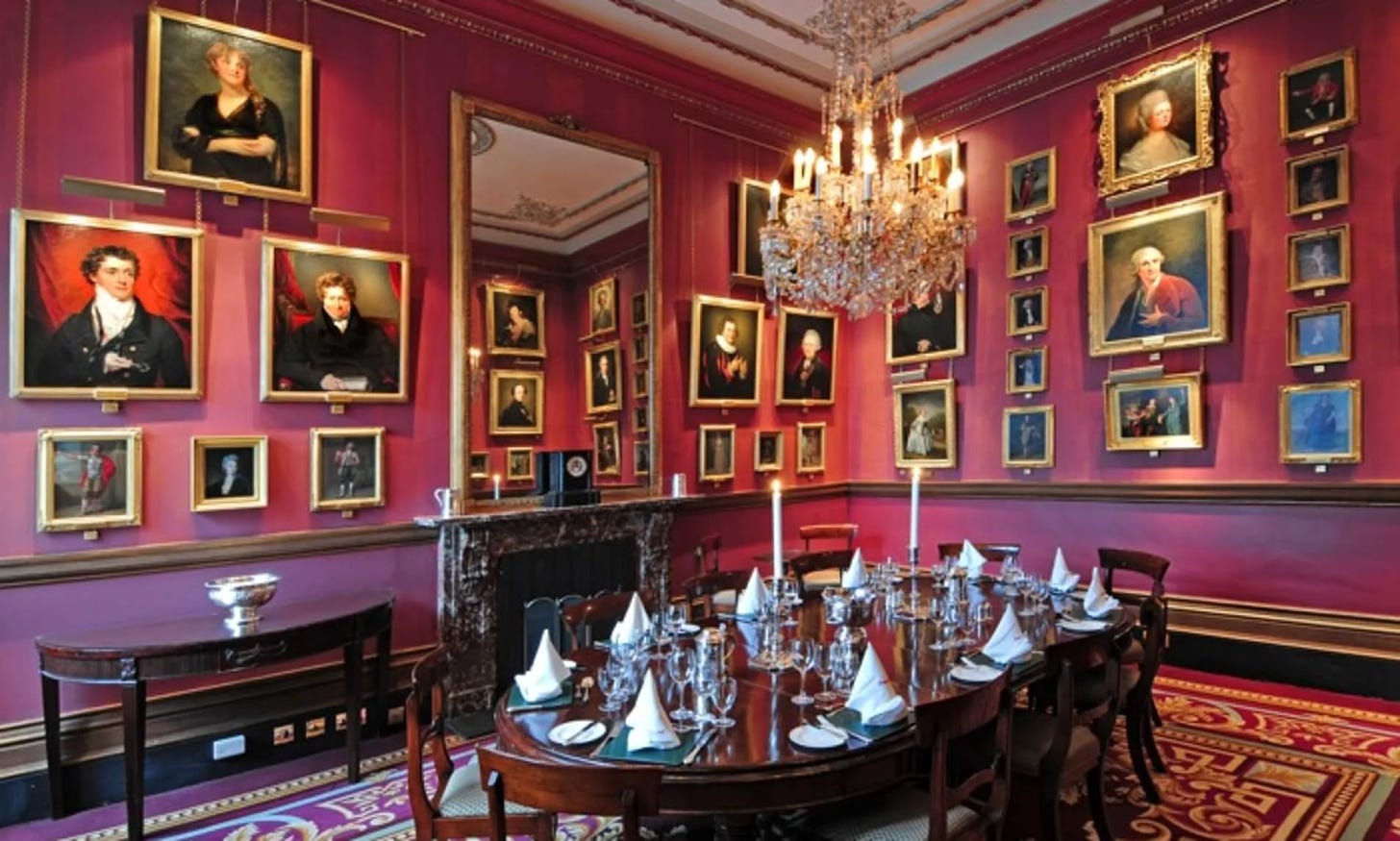

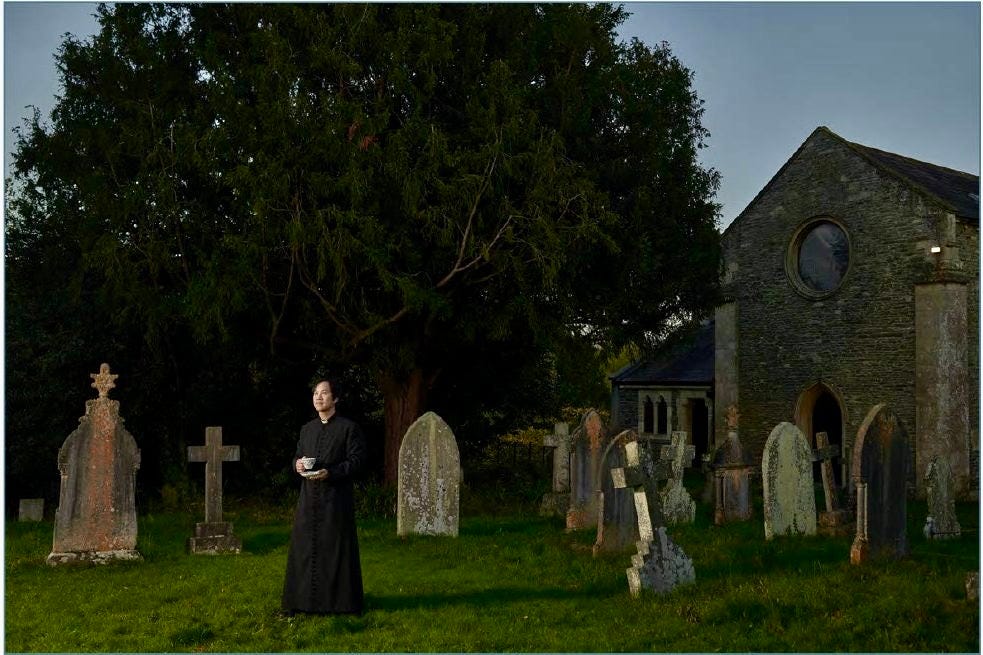
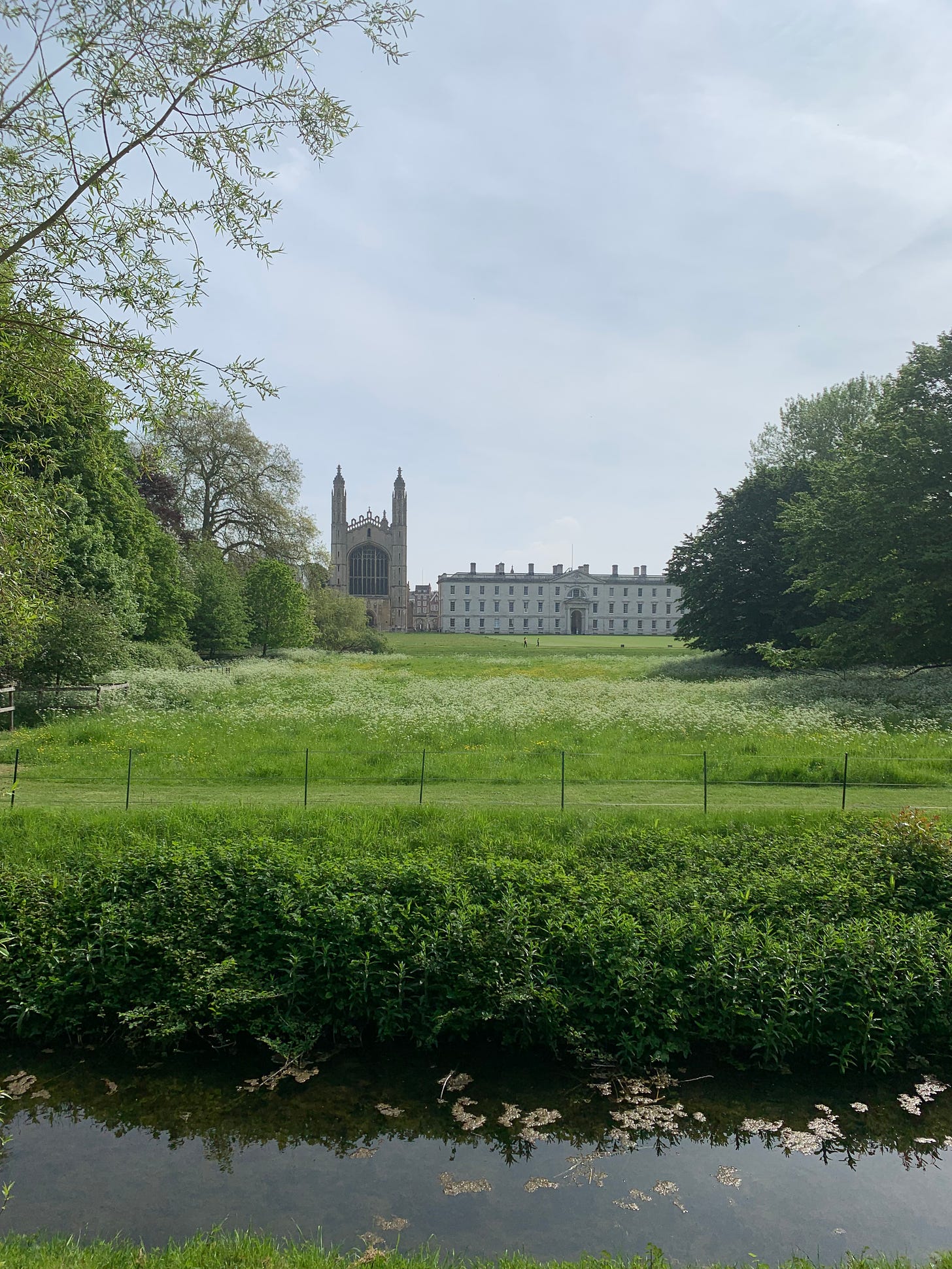
Sometimes i think about the enlightenment's "penny universities", the post-impressionist's frequent café meetings, or mid-19th century english dinner clubs and i wish i could start or join something similar; however i dont think the actual demand in real life for such a thing would be that high, plus where would i find the space to host something (thats not my home)? None of my friends are interested in philosophy or religion or art (except one with a deep passion for politics), and yet i wish i could discuss and talk at length about such topics over dinner and a glass of wine, or a coffee cup between lectures and errands. I feel that since the digital age we have started to get more and more out of touch with each other. Yes we can communicate online in a myriad of ways, but I think there is something special about having to travel to a specific place at a specific time to enter some discussion(s) on an intellectual topic.
I also feel that substack is a place for the exchange of ideas, and your substack is one that I treasure for its intelligent, well thought out observations and excellent, readable prose. Lovely.